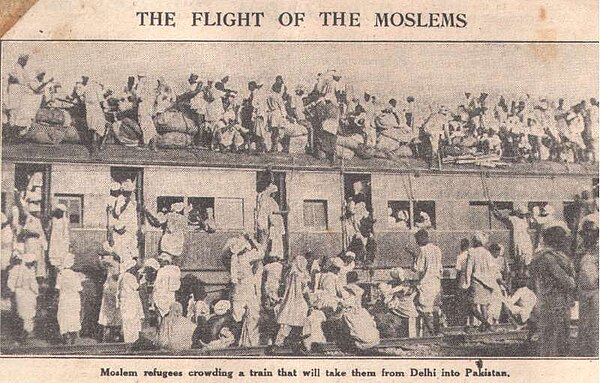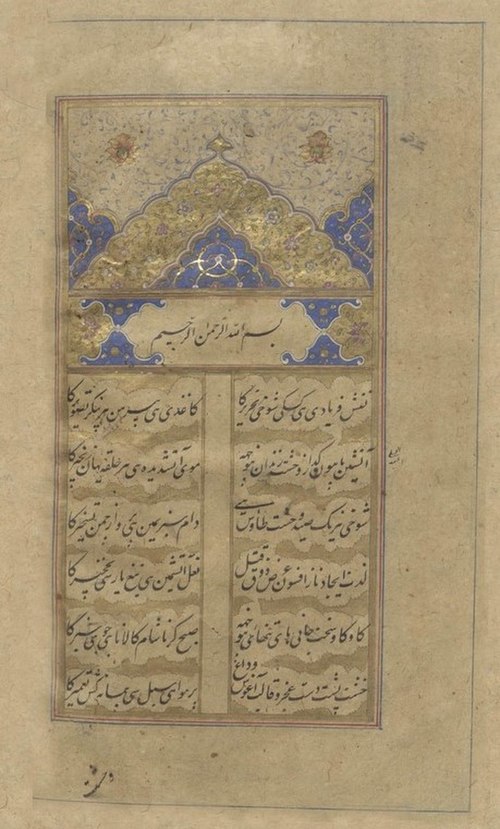Muhajir (Pakistan)
Videos
Page
The Muhajir people are Muslim immigrants of various ethnic groups and regional origins, and their descendants, who migrated from various regions of India after the Partition of India to settle in the newly independent state of Pakistan. The community includes those immigrants' descendants, most of whom are settled in Karachi and other parts of urban Sindh. The Muhajir community also includes stranded Pakistanis in Bangladesh who migrated to Pakistan after 1971 following the secession of East Pakistan in the Bangladesh Liberation War.

Photo from The Manchester Guardian of a group of Muslim migrants boarding a Pakistan-bound train in Delhi amidst the partition of India, c. 1947–1953

Shah Alam II (reigned 1759–1806) seated on a golden throne in Delhi.

The photo monument depicting a couple migrating from India to Pakistan with their household stuff and cattle during the Partition of India.

Muslim refugees boarding a train in September 1947, similar to those involved in the massacre, with the intent of fleeing India
Urdu
Videos
Page
Urdu is an Indo-Aryan language spoken chiefly in South Asia.
It is the national language and lingua franca of Pakistan, where it is also an official language alongside English. In India, Urdu is an Eighth Schedule language, the status and cultural heritage of which are recognised by the Constitution of India; and it also has an official status in several Indian states. In Nepal, Urdu is a registered regional dialect and in South Africa it is a protected language in the constitution. It is also spoken as a minority language in Afghanistan and Bangladesh, with no official status.

Opening pages of the Urdu divan of Ghalib, 1821

A trilingual signboard in Arabic, English and Urdu in the UAE. The Urdu sentence is not a direct translation of the English ("Your beautiful city invites you to preserve it.") It says, "apné shahar kī Khūbsūrtīi ko barqarār rakhié, or "Please preserve the beauty of your city."

A multilingual New Delhi railway station board. The Urdu and Hindi texts both read as: naī dillī.

An English-Urdu bilingual sign at the archaeological site of Sirkap, near Taxila. The Urdu says: (right to left) دو سروں والے عقاب کی شبيہ والا مندر, dō sarōñ wālé u'qāb kī shabīh wāla mandir. "The temple with the image of the eagle with two heads."